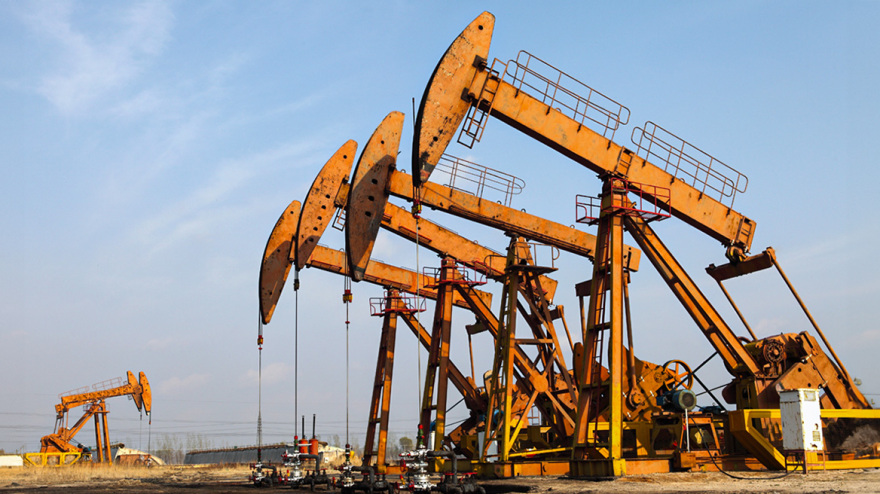If you think that in the distant 2050 we will no longer need oil and natural gas you are wrong… Renewable energy may be taking an increasing share of the global energy mix, but even after 25 years “traditional” fossil fuels will still make up more than 50%.
There are many factors that lead to this conclusion, the first of which is that, unlike Greece where we suffer from sub-nativity, the world’s population in 2050 will have increased by 2 billion people.

These and more are included in ExxonMobil’s Global Outlook 2024, a report that includes the US giant’s predictions on future energy demand, energy resources, emissions reductions through 2050 and more. In it, it makes some very interesting estimates, some of which could even be described as heretical.
However, they carry self-evident weight, coming as they do from a company with an annual turnover of $345 billion (in 2023), profits of $36 billion, a market capitalisation of $536 billion and a multitude of activities spread over all continents, including hundreds of active oil and gas extraction operations. Betting, among other things, on our own presumed deposits in the South and Southwest of Crete.
Although it is made clear that “we do not have a crystal ball”, it is stressed that “we have extensive experience and a deep understanding of the complex global energy system”…
So how does the world’s second largest (after Saudi Aramco) energy conglomerate “see” the future of the world, in its own critical sector and beyond?
We will become 10 billion
The report estimates that the number of people in this tiny speck of the universe is expected to grow from 8 billion today to nearly 10 billion in 2050. With two billion more people on the planet, it predicts the world will need new ways to produce more reliable and affordable energy, promote global economic growth to raise living standards, especially in the developing world, and further reduce greenhouse gas emissions.
“The world will be different in 2050, but the need to provide reliable and affordable energy that leads to economic prosperity and better living standards while reducing greenhouse gas emissions will remain as critical as it is today. Achieving this balance will require wind, solar, oil and gas, as well as virtually every other form of energy available,” the report comments.
“Below the bottom line”
The evidence clearly shows that access to energy and what it signifies is far from self-evident as it is in most Western countries.
On the contrary, based on the Human Development Index created by the United Nations by 2022, the conclusion is highly disappointing. This is because, as ExxonMobil notes, some 4 billion people, half the world’s population, currently live below the “modern energy minimum”. This means they are well below the modern standard of living, which requires a reliable supply of energy for housing, infrastructure, jobs and mobility.
“According to our analysis, for a country to exceed this threshold, average per capita energy use would need to be at least 50 million British thermal units (MMBtu) per year. Developed countries around the world use, on average, more than three times this amount. Meeting basic energy needs is essential to achieve the UN’s goal of eradicating poverty in all its forms everywhere,” the ExxonMobil report said.
The struggle to achieve a modern energy minimum by all nations will lead to a projected 15% increase in total global energy use between now and 2050, it stresses, with renewables, oil and gas playing a key role.
The report notes that such an increase would enable economic growth in developing countries. Conversely, energy use in developed countries is expected to fall by more than 10% as efficiency is improved by lower consumption actions. “The world is at a critical stage: it must reduce carbon emissions and continue to provide the energy people need,” the report says.

Oil demand unchanged
Despite strategies to reduce fossil fuels and the shift to “green energy“, ExxonMobil predicts that by 2050 oil and gas will continue to make up more than 50% of the world’s energy mix, pegging demand at 100 million barrels per day, about the same as it is today.
They are estimated to be around 100 billion barrels per year, which is about the same as today.
Indeed, it is telling that, according to its analysis, if every new car sold in the world in 2035 were electric, oil demand in 2050 would still be 85 million barrels per day, the same as it was in 2010.
The US giant’s estimate, however, is very different from estimates by the International Energy Agency, which expects demand to shrink to about 55 million barrels of oil in 2050. It is also quite divergent from the estimate of another competing giant, BP, which ‘sees’ oil demand in 2050 at around 75 million barrels per day. Who will be vindicated, of course, we will see then…
ExxonMobil further notes that oil demand for gasoline used by passenger cars will decline by 2050, while clarifying that gasoline production is only a relatively small part of the oil industry.
The vast majority of the world’s oil is now and will continue to be used for industrial processes such as construction and chemical production, as well as heavy transport such as shipping, trucks and aviation. “These services are essential to modern life and also fuel future economic growth in the developing world,”
More specifically, it is projected that global electricity demand will nearly double by 2050 as electrification in buildings, industrial production and transport increases.
At the same time, much of the world will continue to shift to lower-emission sources for electricity generation, with wind, solar, natural gas and nuclear power dominating.
According to the same report, energy demand for the transport sector, especially freight, will increase by more than 20% by 2050, with passenger cars accounting for about 30% of demand.
Meanwhile, in the industrial sector, energy demand will increase by 20%, due to heavy industry (steel, cement, metals and manufacturing) and chemicals (plastics, fertilizers and other chemicals).

“Bell” for price explosion
ExxonMobil also predicts strong “turbulence” by the time we reach the 2050 milestone. Specifically, it warns that in the absence of new investment in the oil industry, crude production could fall to 30 million barrels a day by 2030, or 70 million barrels less than global needs, according to its calculations.
Thus ringing a resounding “bell” regarding the need for continued investment in the oil and gas sector. “Global oil and gas supplies will essentially disappear without continued investment. As global demand for oil and gas remains strong, sustained investment is more important than ever.”
In this context, it is highlighted that oil production is naturally declining at a rate of around 15% per year, almost double the previous International Energy Agency estimates of around 8%. This increased rate of decline is the result of a shift in the energy mix towards “unconventional” sources of oil and gas. “These are mainly shale and tight rock formations where oil and gas production typically declines the fastest,” the report said.
“Without new investment, global oil supplies will fall by more than 15 million barrels per day in the first year alone,” it stressed. At that rate, by 2030 they will fall from 100 million barrels a day to less than 30 million, 70 million barrels less than what is needed to meet demand every day.
In such a scenario it is predicted that “the world will experience severe energy shortages and disruptions to daily life within a year of the cessation of investment”. Given the price responses to past oil supply disruptions, a permanent 15% loss of supply annually could increase black gold prices by more than 400%. By comparison, prices rose by 200% during the great oil crisis of the 1970s.
.
Within 10 years,unemployment rateswill likely reach 30%. “This is higher than during the Great Depression of the 1930s,” the report notes.
The conclusion is that continued investment is needed to meet global oil and gas demand, even as companies like ExxonMobil invest billions to reduce greenhouse gas emissions.

The RES
Although developing economies are consuming more energy, global carbon emissions will begin to fall for the first time by 2030, ExxonMobil predicts. This will happen through greater energy efficiency, more renewable energy sources and lower-emission technologies, including carbon capture and storage, hydrogen and biofuels.
It is no coincidence that ExxonMobil itself secured the largest offshore CO2 storage site in the US a few days ago. It is a site of more than 271,000 acres that comes to complement the group’s onshore CO2 storage portfolio, consolidating its leadership in this area as well.
Thus, energy-related emissions are projected to be reduced by 25% by 2050, but much more is certainly needed against the… galloping challenge of climate change.
By then, the use of electricity is also projected to increase dramatically by 80% as part of the world’s overall energy mix. According to the report, major changes are coming to the energy mix as between now and 2050 the share of solar and wind power will more than quadruple, while coal will continue to be displaced by lower-emission sources, including natural gas, which reduces carbon emissions by up to 60% in electricity generation.
Summarized and codified, the US giant predicts that:
– All current energy types will remain in the energy mix in 2050.
– Renewable energy will grow faster and in fact the share of wild and solar energy will more than quadruple.
– Coal’s place in the global energy mix will decline further, accounting for less than half of the combined contribution of renewables and nuclear power.
– Under any credible scenario, oil and gas will remain essential to the global economy.
Photo: 123RF / Visual Hellas
Ask me anything
Explore related questions





